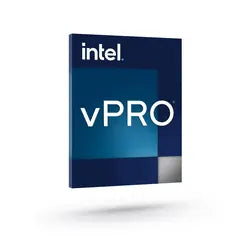
Aug 2023
0 Comments
MackTech Biz
Intel vPro Processor: Enhancing Security and Remote Management for Businesses
I. Introduction to Intel vPro Processor
A. What is Intel vPro technology?
- Intel vPro is a comprehensive set of hardware-based features embedded in Intel processors, specifically designed to enhance the security, manageability, and performance of business computing devices. It includes technologies like Intel Trusted Execution Technology (TXT), Intel Active Management Technology (AMT), and Intel Turbo Boost Technology, among others.
B. Evolution of vPro processors: A breakthrough in computing
- Since its inception in 2006, Intel vPro technology has evolved significantly, addressing the ever-increasing security threats faced by businesses and the growing demand for remote management capabilities. Originally available in select Intel Core processors, vPro features are now present across a wide range of Intel processors, including the latest generations.
C. The importance of Intel vPro in modern business operations
- In today's digital landscape, businesses encounter sophisticated cyber threats and require efficient ways to manage remote and dispersed workforces. Intel vPro's robust security features and remote management capabilities enable businesses to safeguard sensitive data, ensure compliance, and streamline IT operations in a distributed environment.
II. Key Features of Intel vPro Processor
A. Hardware-based Security for Business Data
1. Exploring Intel Trusted Execution Technology (TXT)
- Intel TXT creates a hardware-based, isolated, and verifiable environment, known as Trusted Execution Environment (TEE), where critical operations and data are protected from tampering and unauthorized access. By measuring the hardware and software components during system boot, TXT ensures that the system is in a trustworthy state before loading the operating system, defending against attacks such as rootkits and bootkits.
2. Strengthening security with Intel Identity Protection Technology (IPT)
- Intel IPT is a multifactor authentication technology that enhances security by adding an extra layer of protection during user logins and online transactions. It offers several authentication methods, including one-time passwords (OTP), PKI certificates, and protected transaction display, protecting user identities and sensitive transactions from threats like keyloggers and man-in-the-middle attacks.
B. Efficient Remote Management Capabilities
1. Empowering IT teams with Intel Active Management Technology (AMT)
- Intel AMT enables IT administrators to remotely manage and control devices, even when the operating system is down or unresponsive. It functions independently of the operating system, running on a separate Management Engine (ME) embedded within the processor. AMT provides out-of-band (OOB) communication, allowing administrators to perform tasks such as remote power control, BIOS updates, and hardware inventory management, irrespective of the device's state or location.
2. Streamlining processes with Out-of-Band (OOB) Management
- OOB management complements Intel AMT by providing a direct and secure connection to the device's hardware. It allows administrators to remotely access the device's BIOS and UEFI settings, update firmware, and apply security patches, all without requiring a functional operating system. This capability is particularly useful for diagnosing critical issues and performing maintenance tasks in emergencies, reducing response times and minimizing downtime.
C. Unleashing Performance and Productivity
1. Boosting computing power with Intel Turbo Boost Technology
- Intel Turbo Boost Technology automatically adjusts the processor's frequency and power based on the workload's demands, effectively overclocking the cores to deliver peak performance when needed. For example, a quad-core processor with a base clock speed of 2.6 GHz may dynamically increase to 3.5 GHz or more when running demanding applications like video editing or virtualization, providing a significant performance boost without requiring manual overclocking.
2. Multitasking made easy with Intel Hyper-Threading Technology
- Intel Hyper-Threading enables each physical processor core to handle two threads simultaneously, effectively creating virtual cores known as "logical processors." This technology improves overall system responsiveness, enabling the CPU to execute multiple tasks more efficiently. For example, in a quad-core processor with Hyper-Threading, the system appears to have eight logical processors, allowing it to handle multiple tasks or threads simultaneously without significant performance degradation.
D. Reliability for Business Operations
1. Extended lifecycle support: A boon for enterprises
- Intel vPro processors often come with extended product lifecycles, providing businesses with stable and supported hardware over an extended period. This extended lifecycle reduces the need for frequent hardware replacements and simplifies device management, particularly in large-scale deployments and mission-critical environments.
2. Ensuring stability and dependability for business continuity
- The stability and dependability of Intel vPro processors are critical for ensuring uninterrupted business operations. Reliability features, combined with comprehensive remote management capabilities, enable businesses to proactively address issues, perform updates, and optimize system performance, minimizing the risk of unexpected failures and downtime.
III. Benefits of Intel vPro Processor for Businesses
A. Enhanced Security and Data Protection
1. Safeguarding against malware and unauthorized access
- Intel vPro's hardware-based security, including TXT and IPT, creates a robust defense against malware, rootkits, and unauthorized access attempts. For example, TXT's secure boot process ensures that only trusted software and firmware are loaded during system startup, effectively preventing rootkits from compromising the system's integrity.
2. Securing sensitive business information and communications
- Intel IPT's multifactor authentication adds an additional layer of security to protect user identities and sensitive communications. By requiring two or more authentication factors, such as a password and a one-time password (OTP) sent to a mobile device, Intel IPT prevents unauthorized access to critical business systems and data.
B. Simplified Remote Management and Troubleshooting
1. Efficient IT administration and support from anywhere
- Intel vPro's remote management capabilities, powered by AMT and OOB management, enable IT teams to proactively manage devices remotely from a central management console. For example, administrators can remotely deploy security patches, update firmware, and monitor system health across multiple locations and devices, streamlining IT operations and reducing the need for on-site support visits.
2. Seamless remote troubleshooting and maintenance
- With Intel AMT and OOB management, IT professionals can diagnose and resolve device issues remotely, regardless of the device's operating system status. This capability reduces the time and resources required for problem resolution, ensuring prompt support for end-users and minimizing productivity disruptions.
C. Improved Productivity and Responsiveness
1. Faster computing for increased productivity
- Intel Turbo Boost Technology dynamically increases the processor's clock speed, providing a significant performance boost for compute-intensive tasks. For instance, when rendering a video or running complex simulations, Turbo Boost automatically increases the clock speed to deliver faster processing times, improving overall task completion rates and employee productivity.
2. Minimizing downtime for uninterrupted operations
- The combination of Intel vPro's stability, remote management capabilities, and hardware-level diagnostics helps identify potential issues before they lead to system failures. This proactive approach reduces downtime and ensures continuous business operations, which is particularly critical in industries where any disruption can have severe financial consequences.
D. Cost Savings and High ROI
1. Reducing support costs and overall IT expenses
- Intel vPro's efficient remote management capabilities, such as AMT and OOB management, reduce the need for on-site support visits and manual interventions, leading to cost savings in IT operations. Additionally, the extended lifecycle of vPro processors minimizes the frequency of hardware replacements, further contributing to cost reductions.
2. Higher returns through improved productivity
- By improving system performance and reducing downtime, Intel vPro processors indirectly contribute to higher employee productivity. Faster processing times, efficient troubleshooting, and reliable devices allow employees to focus on their tasks without unnecessary interruptions, maximizing the return on the organization's technology investments.
IV. Real-world Use Cases and Applications
A. Intel vPro in Enterprise Environments
1. How vPro benefits large-scale business operations
- In large enterprises with numerous devices and complex IT infrastructures, Intel vPro's remote management capabilities streamline device administration and ensure consistent security policies across the organization. For example, a multinational company with branches in different countries can centrally deploy software updates, monitor security compliance, and manage device configurations from a single management console, maintaining a cohesive and secure IT environment.
2. Centralized IT management and security advantages
- Intel vPro provides centralized IT management tools that enable administrators to efficiently deploy and manage security policies across a diverse device fleet. Administrators can use Intel AMT and OOB management to remotely apply security patches, configure BIOS settings, and respond quickly to security incidents, ensuring a consistent security posture throughout the enterprise.
B. Intel vPro for Small and Medium Businesses (SMBs)
1. Streamlining IT management for smaller teams
- SMBs often have limited IT resources and may not have dedicated IT staff to manage device deployments and support. Intel vPro's remote management capabilities enable these smaller teams to efficiently handle device maintenance, troubleshooting, and software updates without the need for on-site visits. For example, a small retail business with multiple point-of-sale devices can remotely manage and update them from a central location, reducing IT overhead and optimizing device performance.
2. Enhancing security for sensitive data in SMBs
- SMBs dealing with sensitive customer data, intellectual property, or financial information can benefit significantly from Intel vPro's robust security features. For instance, a small law firm handling sensitive client information can leverage Intel TXT to ensure that only authorized software and firmware are loaded during system boot, protecting confidential case files and client data from potential cyber threats.
C. Intel vPro in Healthcare and Financial Institutions
1. Meeting compliance and data protection requirements
- Healthcare organizations and financial institutions face stringent regulatory requirements, such as the Health Insurance Portability and Accountability Act (HIPAA) and the General Data Protection Regulation (GDPR). Intel vPro's hardware-based security features and remote management capabilities help these institutions meet data protection and privacy standards effectively. For example, a hospital using Intel vPro-enabled medical devices can remotely manage and update them to ensure compliance with industry-specific regulations.
2. Enabling remote healthcare monitoring and support
- In the healthcare sector, Intel vPro's remote management capabilities enable IT teams to proactively monitor and maintain medical devices, such as remote patient monitoring systems and medical imaging equipment. For instance, a telehealth provider can remotely diagnose and address issues with patient monitoring devices, ensuring continuous patient care and minimizing the need for physical service visits.
V. Comparison with Other Processor Technologies
A. Intel vPro vs. AMD's Business Processor Solutions
- Both Intel vPro and AMD offer business-focused processor solutions; however, Intel vPro stands out with its robust security features, including hardware-based security and remote management capabilities. While AMD processors are competitive in terms of performance, Intel vPro is preferred by businesses that prioritize stringent security requirements and efficient remote device management. For example, a financial institution handling sensitive customer data may choose Intel vPro processors to ensure a higher level of hardware-based security and simplified remote management, compared to AMD-based alternatives.
B. A Look at ARM-based Processors for Mobile and IoT Devices
- ARM-based processors dominate the mobile and Internet of Things (IoT) device market due to their energy efficiency and performance in low-power applications. However, for businesses that require enterprise-level security and remote management features, Intel vPro processors are better suited, as they offer comprehensive security features and a proven track record in enterprise environments. For instance, an industrial manufacturer may opt for Intel vPro processors to enable robust remote management and hardware-based security for its IoT devices deployed across multiple factory locations.
VI. Limitations and Challenges of Intel vPro Processor Adoption
A. Evaluating the cost considerations of vPro-enabled systems
- While Intel vPro processors offer numerous benefits, businesses must carefully evaluate the initial investment and ongoing management costs associated with vPro-enabled systems. Organizations with budget constraints may need to weigh the benefits of enhanced security and remote management against the total cost of ownership. For example, a small business considering vPro-enabled devices may need to assess the cost implications compared to non-vPro alternatives to determine the most cost-effective solution for their specific needs.
B. Overcoming compatibility issues in legacy systems
- For businesses with existing legacy systems, the adoption of vPro technology may require careful planning and potential hardware upgrades to ensure compatibility. While modern vPro processors are designed to be backward compatible, businesses need to assess their existing infrastructure and determine the best approach for integration. For instance, a company with a mix of older and newer devices may need to phase in vPro-enabled systems gradually, considering factors such as device lifecycle and budget constraints.
VII. Future Trends and Developments for Intel vPro
A. Intel's roadmap and future enhancements for vPro technology
- Intel continues to invest in the development of vPro processors, promising even more advanced security features and management capabilities in future releases. These improvements will address evolving cybersecurity threats and the growing demand for efficient remote management solutions. For example, future vPro processors may incorporate additional hardware-based security technologies and further enhance AMT's remote management capabilities to stay ahead of emerging threats and provide even greater flexibility for IT administrators.
B. Anticipated advancements driving Intel vPro's growth
- As cyber threats become more sophisticated and businesses embrace remote and hybrid work models, Intel vPro is poised to play a pivotal role in shaping the future of secure and efficient computing. With ongoing improvements and innovation, vPro processors will continue to evolve to meet the dynamic needs of modern businesses. For instance, advancements in vPro technology may enable seamless integration with cloud-based management platforms, allowing businesses to manage their devices more efficiently and securely, regardless of their physical location.
VIII. Conclusion
A. Recapitulating the Crucial Advantages of Intel vPro Processor
- Intel vPro processors offer an all-in-one solution for businesses seeking enhanced security, remote management capabilities, and performance optimization. By leveraging hardware-based security features like Intel TXT and IPT, efficient remote management through Intel AMT and OOB management, and productivity enhancements with Turbo Boost and Hyper-Threading, vPro processors provide a comprehensive and reliable platform for modern business computing. These features are essential for businesses to navigate the challenges of a dynamic and interconnected digital landscape.
B. Emphasizing the role of vPro in shaping the future of computing
- In an increasingly connected and data-driven world, Intel vPro plays a critical role in providing businesses with the tools they need to secure, manage, and optimize their computing devices. As businesses face new challenges and opportunities, Intel vPro processors will continue to be a driving force behind secure and seamless business operations, empowering enterprises to thrive in a rapidly evolving technological landscape.

